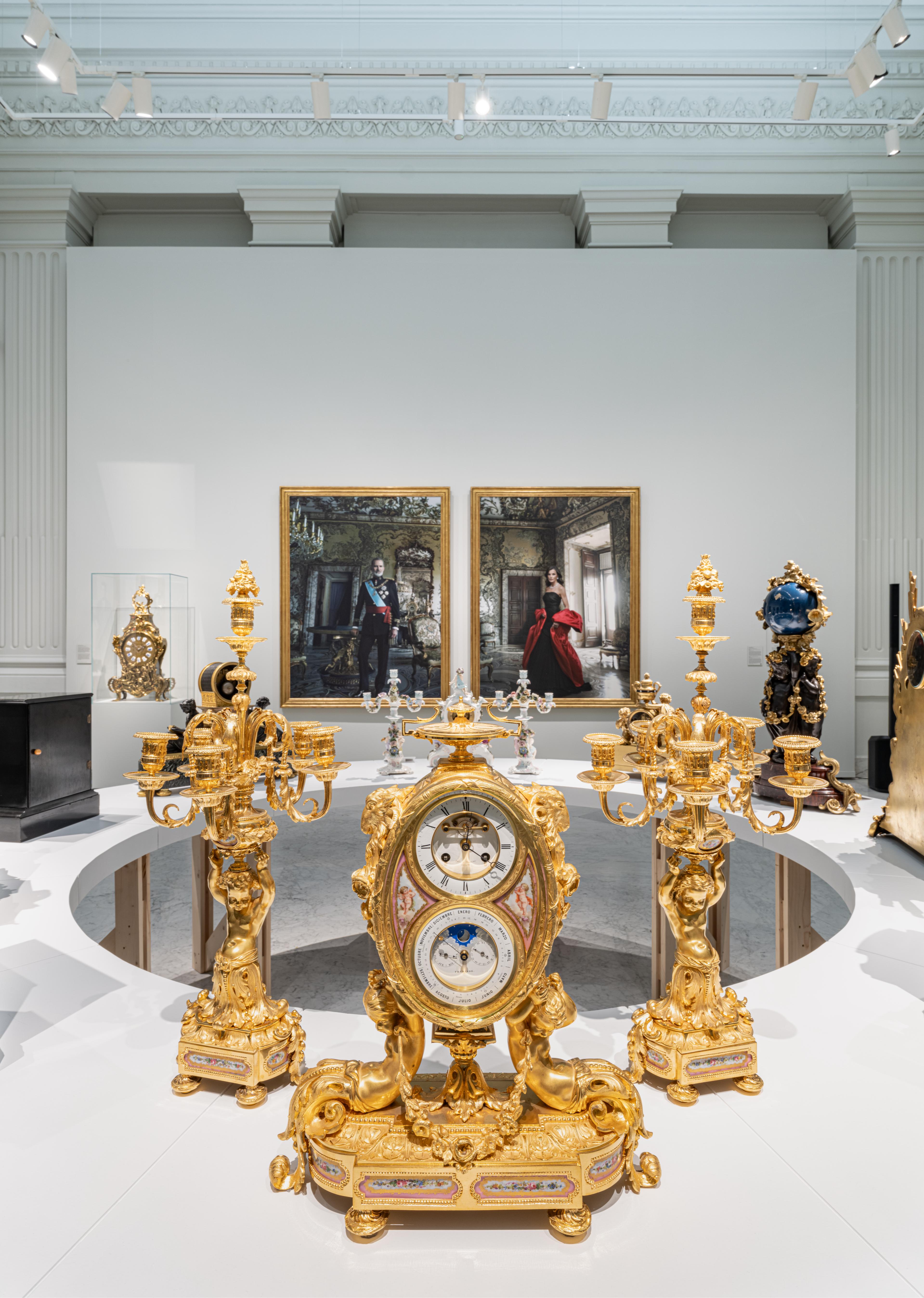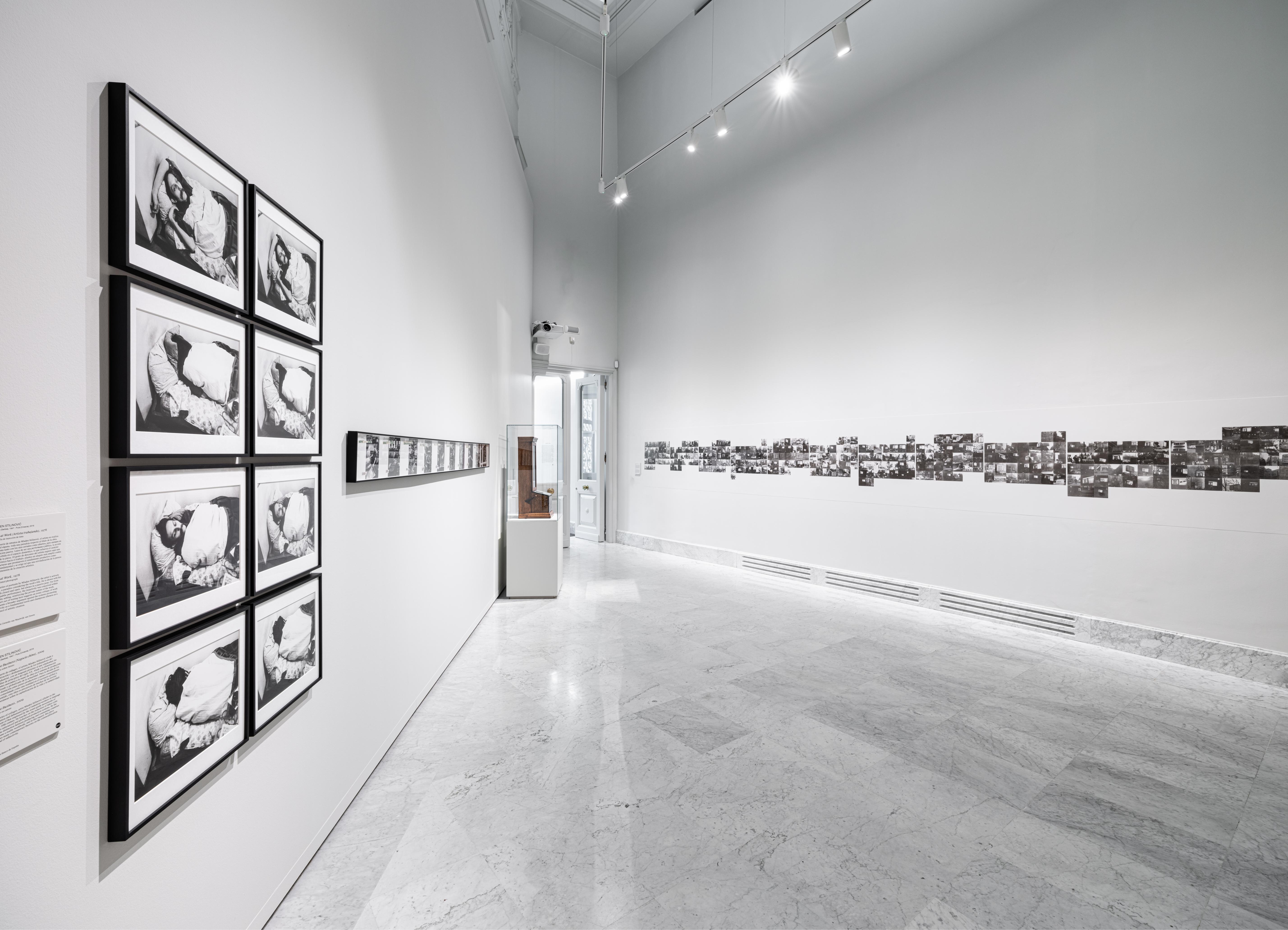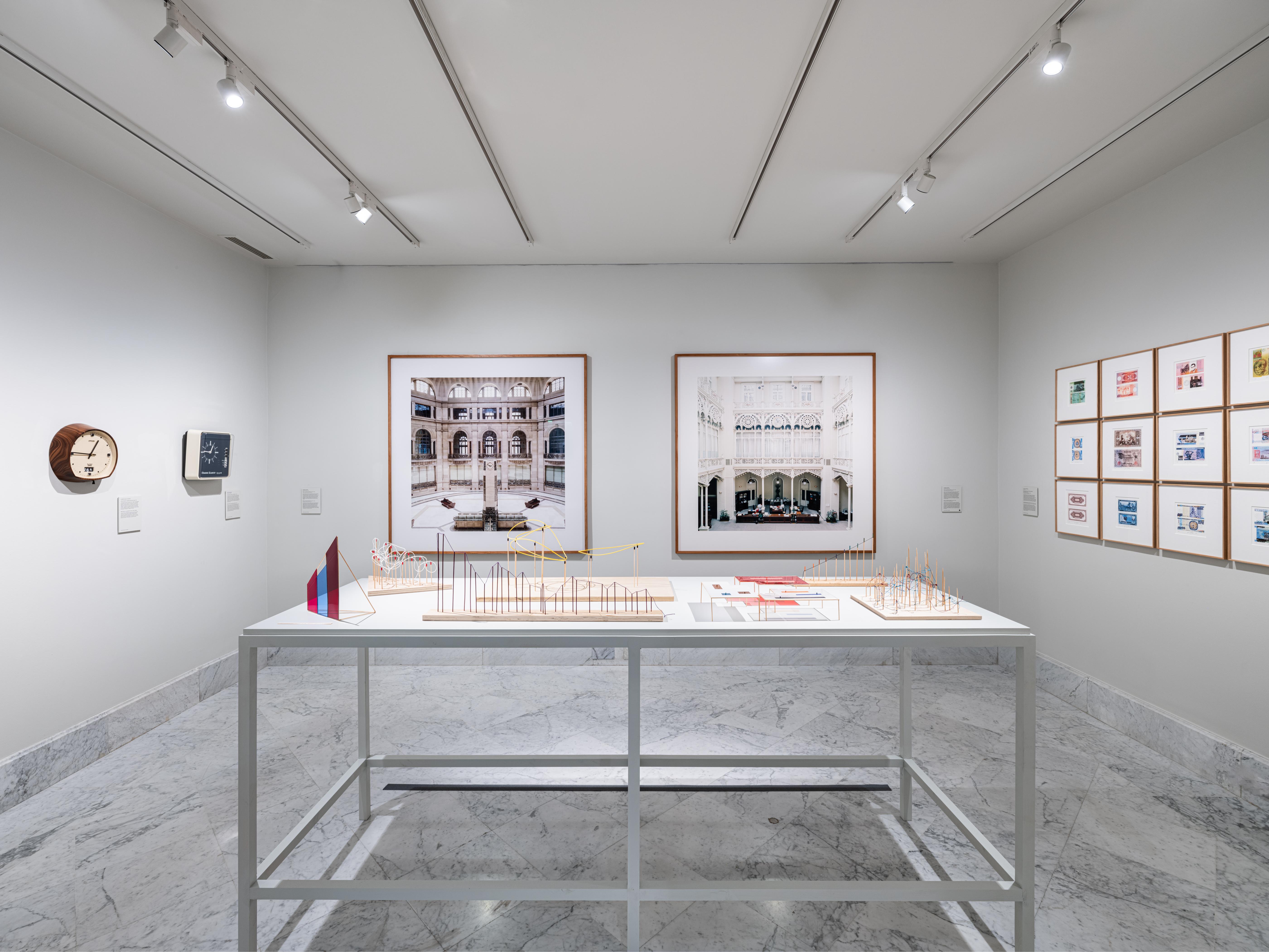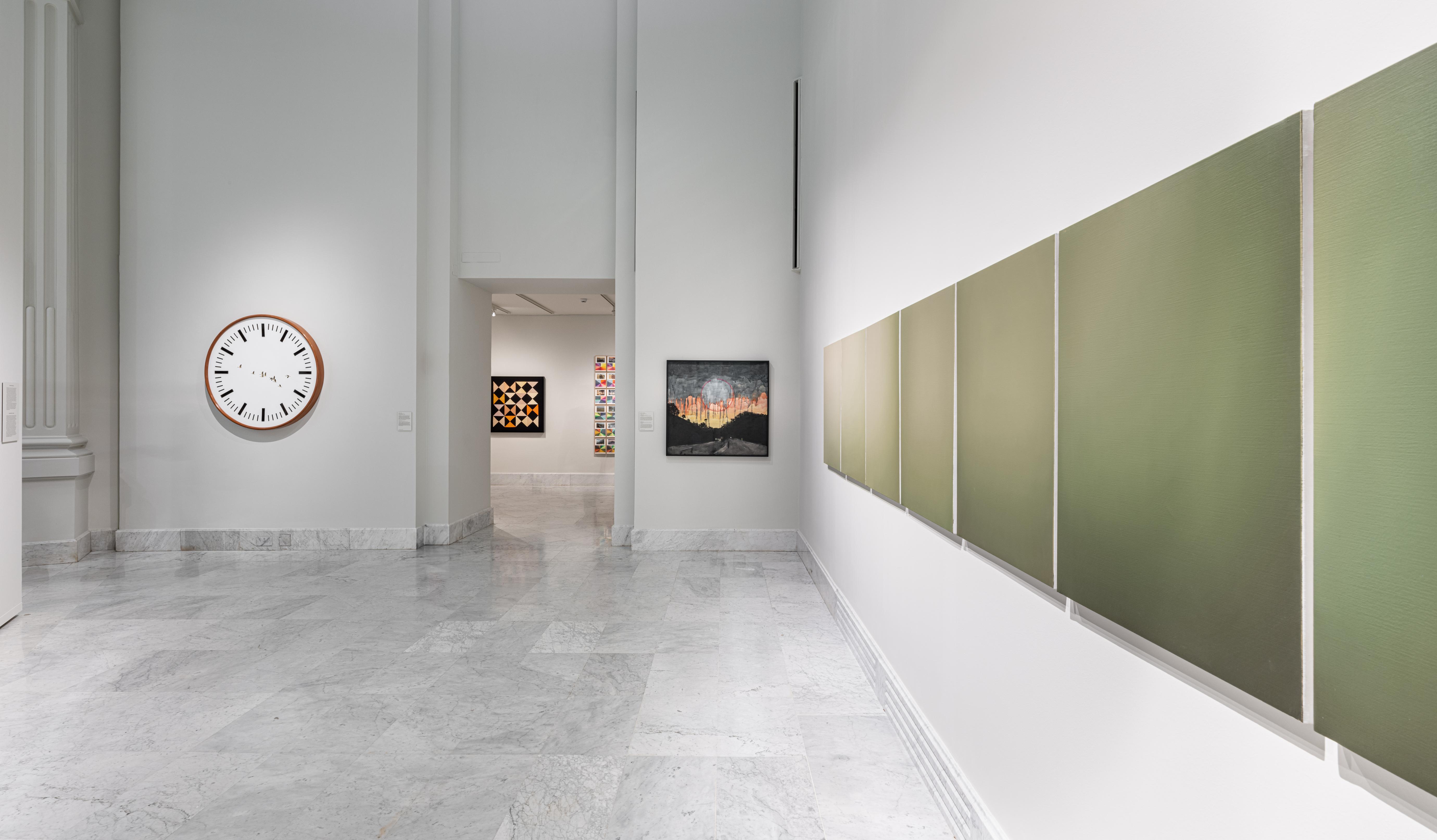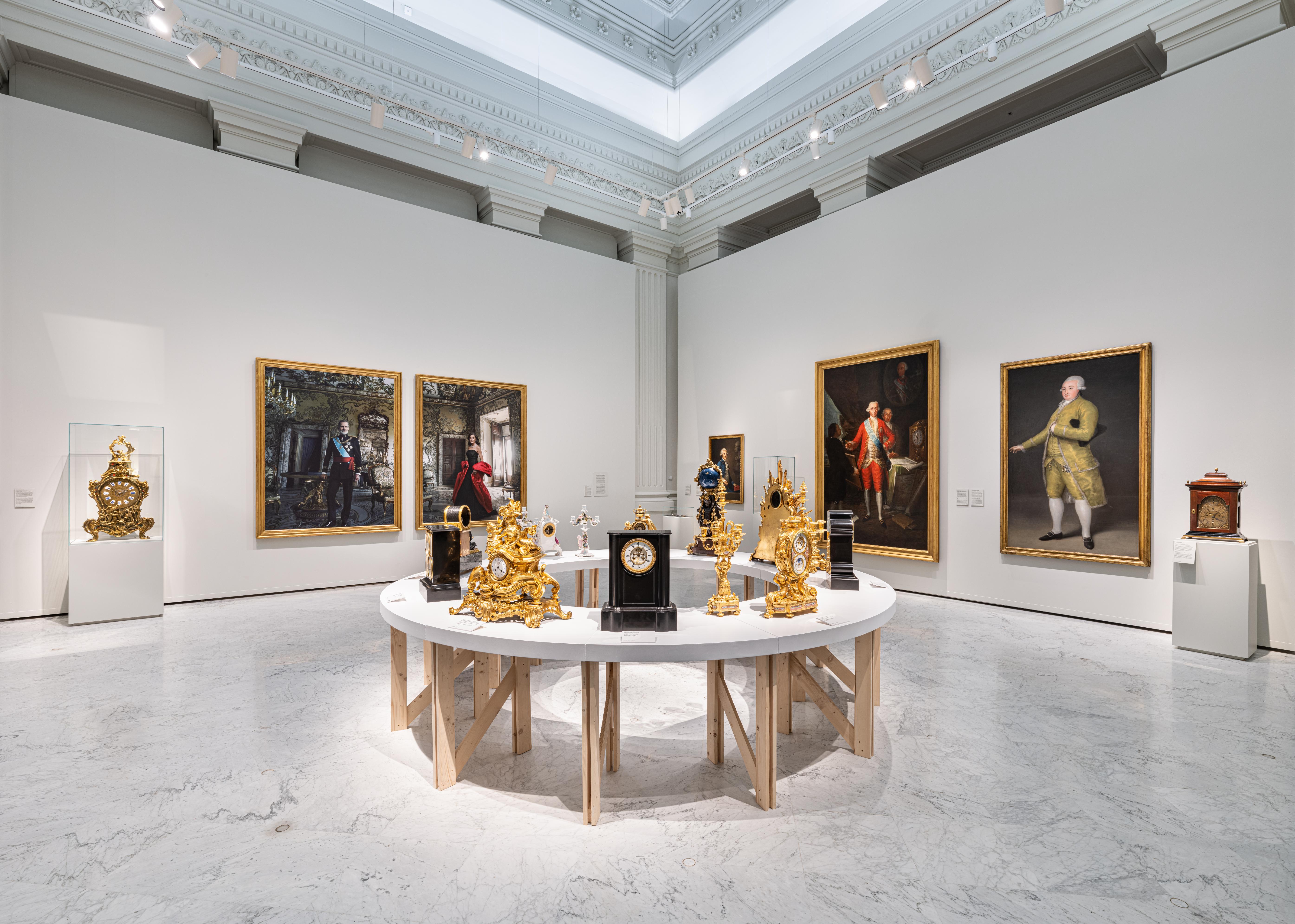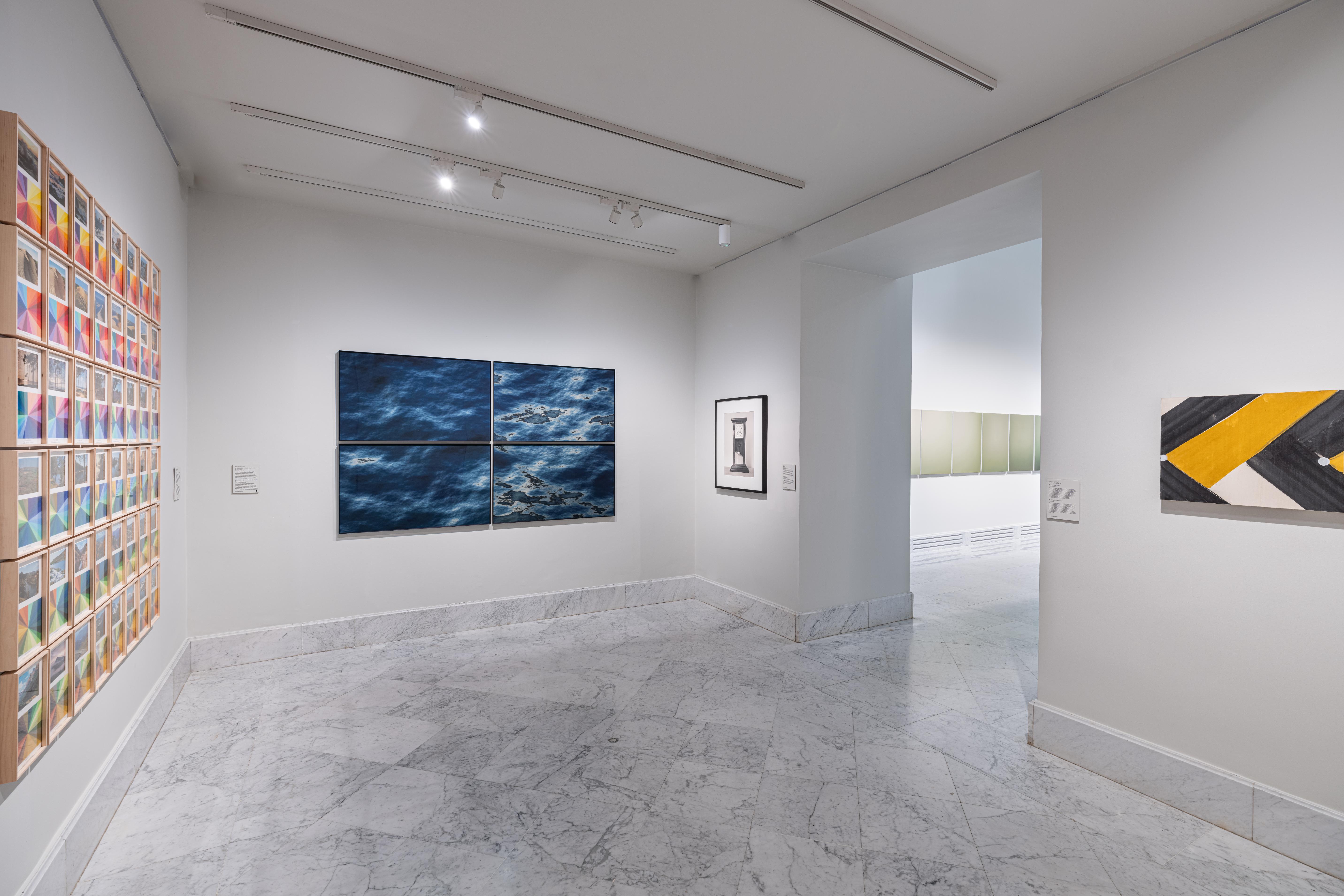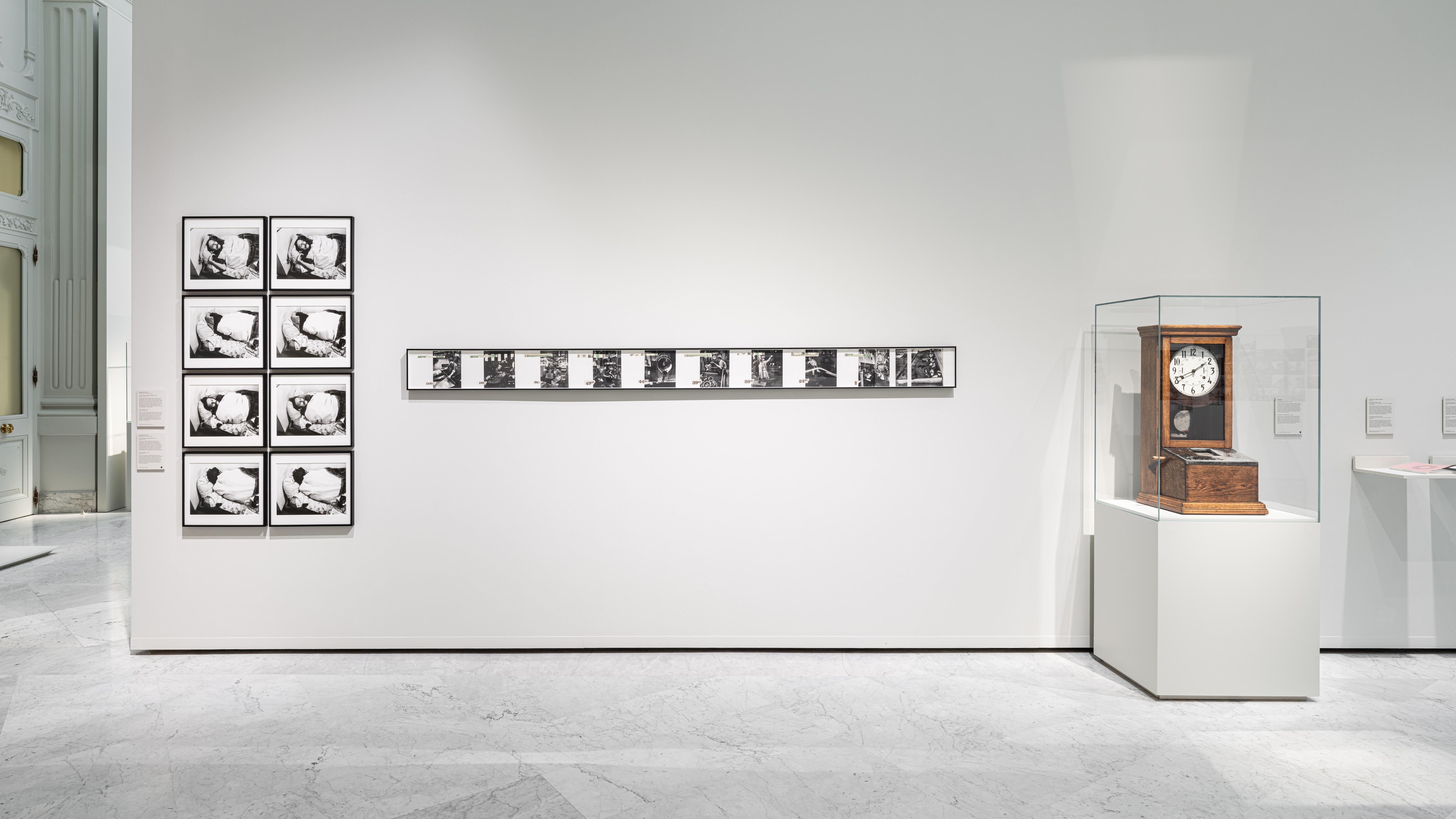La noción de tiempo inaugurada por Cronos
November 27, 2024–May 31, 2025
Calle Alcalá 48
Sala de exposiciones del Banco de España
28014 Madrid Madrid
España
Hours: Tuesday–Saturday 11am–2pm
Saturday 4–8pm
T +34 913 38 50 00
The exhibition offers a critical reflection on how time is represented in art, through more than fifty works including tapestries, paintings, sculptures, photographs, and timepieces. Among the highlights are photographic portraits of King Felipe VI, Queen Letizia, and former Governor Pablo Hernández de Cos, taken by the renowned photographer Annie Leibovitz. These portraits represent a milestone in the institution’s tradition, being the first in photographic format and created by a foreign artist.
The exhibition is organized into three thematic sections: Portraits Through Time, which includes the aforementioned portraits alongside works by artists such as Francisco de Goya; I Don’t Have Time and A Time Without a Clock, which showcase contemporary works that question the linear conception of time. In addition, a selection of historical timepieces from the Banco de España’s collection is on display—some of which are still functional—adding an auditory dimension to the visitor experience.
The Tyranny of Chronos brings together more than 50 contemporary works by national and international artists. The exhibition invites visitors to reflect on how time governs not only our routines but also our economic, social, and political systems.
Through photography, sculpture, painting, clocks, and other graphic works, the exhibition challenges concepts such as productivity, the clock as a tool of control, and dominant narratives of linear, patriarchal, and colonial time.
A particularly notable part of the exhibition features historical clocks from the Banco de España’s own collection. Spanning from 18th-century precision mechanisms to pendulum clocks and pieces of French and Swiss craftsmanship, these objects trace a parallel history of time as both technology and a tool of social organization.
Several of these clocks are still working and keep time within the exhibition space itself, providing a rhythmic and auditory layer to the visit. Far from being merely decorative, these pieces serve as a testament to how institutions—including the central bank—have helped establish a universal standard of time, linked to the development of capitalism, the workday, and economic regulation.
To visit the exhibition during these final days, advance booking is required via the Banco de España’s ticketing platform. Guided tours are offered on Wednesdays from 6 to 7pm and Saturdays from 11am to 12pm. Additionally, family-friendly tours for children are scheduled on Saturdays from 12:15 to 1:15pm. All activities are led by professional cultural mediators and are designed to encourage meaningful dialogue between the artworks and visitors.

